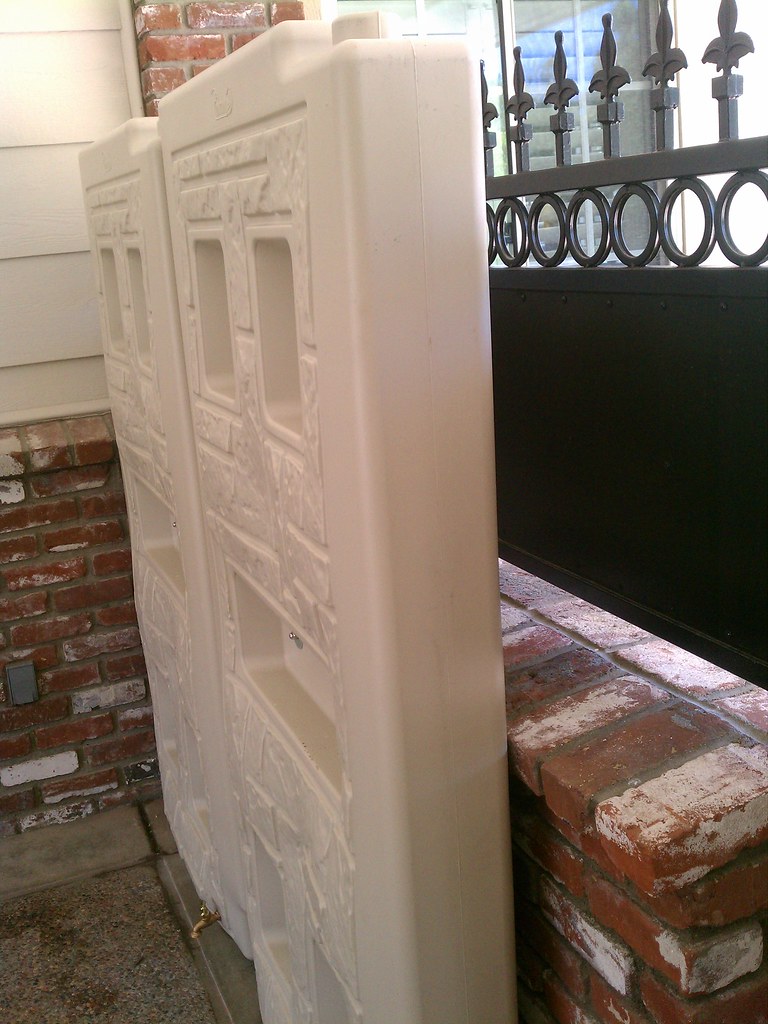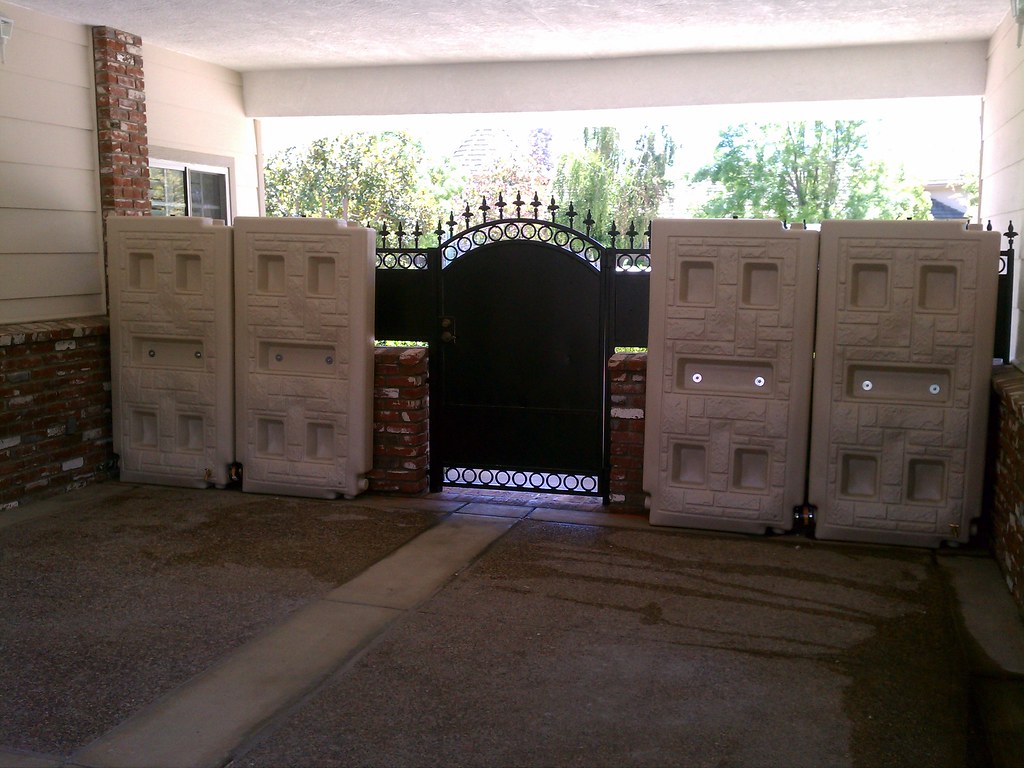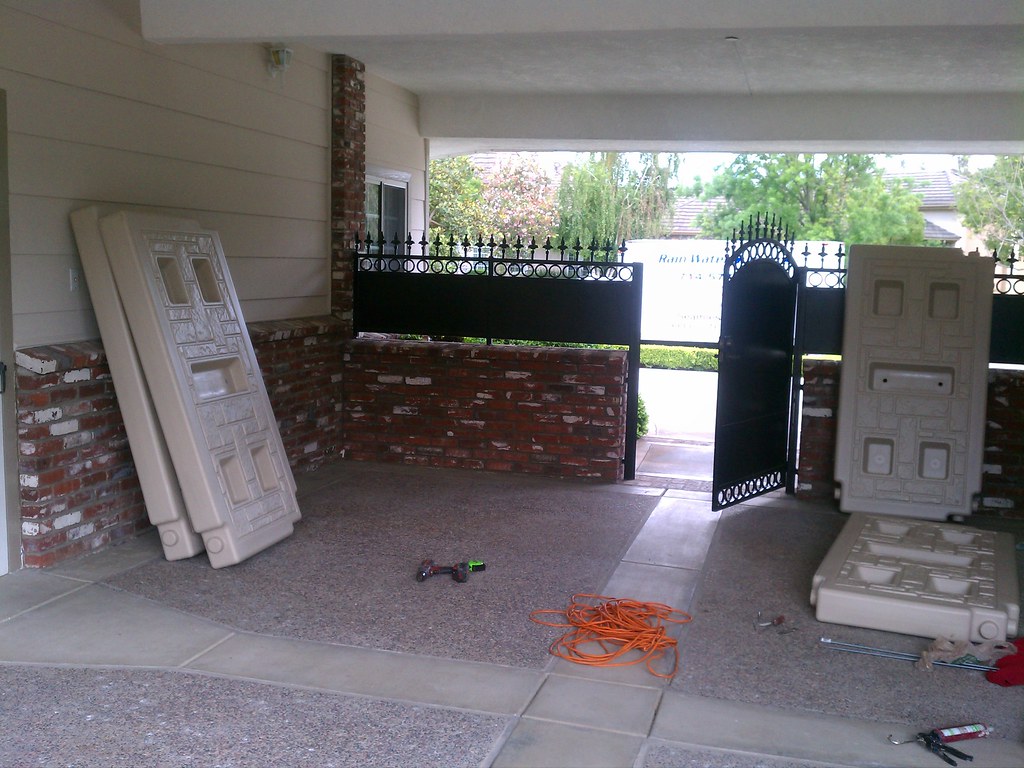" California is like, so totally lagging behind in this whole rainwater harvesting thing. "
Ah well, we are a crisis orientated society. It will take a serious Earthquake or major prolonged drought before people get it, I guess. The above quote is loosely taking from this story here.
 |
| A fine mesh high quality gutter screen should be a priority on a rainwater harvesting system. |
One of the most important parts of a rainwater harvesting system is the debris screen for the rain gutters. I often hear customers say that for the price of an even inexpensive gutter screen you could hire a day laborer to clean them once a year. The key question may be; are you going to do that?
People forget stuff. They forget to clean their gutters and even more so, their roofs. Unconsidered by many an average homeowner in Southern California is the risk they take when hiring those day laborer types. They don't realize that the legal responsibility is on them, the homeowner. You are required by law to have insurance to cover uninsured laborers. Ask yourself, and I speak to the other poor saps I see on the freeway everyday; do you have an umbrella policy that will cover you when that displaced transnational entity falls off your roof while cleaning your gutters?
I didn't think so.
Not maintaining your roof and gutters causes all kinds of property damage;
 |
| See more pictures of this Long Beach California home that had 40k in damage due to leafs clogging the valley metal, gutters and trapping moisture in the wood roofing deck. Click HERE |
On a tile roof like that ( and by-the-way, those types of tile roofs are known to gutter dudes as " egg-shells " ), leafs collect on the roof and when it rains the debris forms a barricade for the water. Water is ruled by gravity and finds its way down, which means that the water spreads out under the tiles and causes damage. As a gutter man for 26 years I have installed miles of EZ Lock gutter screen. The problem for a contractor is that when people see grass growing out of a gutter with screen you installed they will call you wanting to know, " why the heck is there grass growing out my gutters that you, Mr. Expert, installed two years ago?!? I need a service call! "
So after 26 years installing rain gutters and 14 years being an independent business I have picked a gutter screen that actually works. It is of a thicker stouter material than any other gutter screen. It is so strong that a heavy tradesmen could lean a ladder on the gutter and the gutter would likely not be damaged at all.
I present to you, Gutterglove.
 | ||
| click the image for a larger view |
The above image was from a rainwater harvest installation in Tustin, California where we used Gutterglove Ultra as a first stage filtration device. The idea is not only to keep the gutters clean, but to keep sedement from forming in the bottom of the rain barrels. The next image is from a rainwater harvesting project in Los Angeles and featured Gutterglove Pro;
These are real life examples of products that work from a dude ( that's California for person ) that has been in the trenches for over a quarter century, installing all types of seamless and custom rain gutters. All over the L.A and San Diego area are gutters that bear my brand; Las Vegas. Salt Lake City. Volcano, Hawaii and soon, thanks to God and www.peacewater.org I will be installing rain gutters and rainwater harvesting systems in Rwanda.
I'd like to recognize Robert Lenny, the owner of Gutterglove for his generous cash donation to the P.E.A.C.E. team. We at www.peacewater.org are bringing clean water to people in need in five countries.
Details
Construction:Gutterglove Ultra consists of two components, a perforated aluminum channel and type 316 stainless steel mesh. The stainless steel mesh is glued into grooves along both sides of each 5 foot aluminum channel section. It installs on any existing gutter. Gutterglove's specifications were designed so that it simply slips under the roof shingles and fits snuggly to the front lip of your gutter. Gutterglove should be installed at the same pitch as the roof (up to 5/12) to get the best performance of debris shedding off. However, it's not necessary to install Gutterglove at greater then a 30 degree pitch.
Aluminum Channel Frame:
Aluminum Channel Frame: The extruded aluminum support frame is anodized to further protect itself from the environment and to make it more adaptable to be installed on a copper gutter. The anodizing process converts the aluminum surface into an extremely hard, durable, corrosion resistant, long-lasting aluminum oxide finish. Anodizing also responds favorably to current governmental regulations because it is one of the most environmentally friendly industrial processes. Since this process is a reinforcement of a naturally occurring oxide process, it is non-hazardous and produces no harmful or dangerous by products. Anodized aluminum is used around the world as highly durable exteriors in commercial buildings such as one of the world’s tallest buildings, the Sears Tower in Chicago, Illinois. Other revolutionized uses are in scientific instruments, home appliances, satellites in space for harsh environmental protection, staircases in skyscrapers and a host of other uses.
Gutterglove is the ONLY gutter guard in existence that uses an anodized extruded aluminum profile.
Stainless Steel Mesh:The super-strong type 316 stainless steel mesh allows more than 150 inches of hourly rainfall to filter through to your gutter. Type 316 is molybdenum-bearing austenitic stainless steel which is more resistant to general corrosion and pitting/crevice corrosion than the conventional chromium nickel austenitic lower quality stainless steels such at types 302 and 304 or any other standard stainless steel alloys. The pots and pans manufacturers that are highly promoted at home and garden shows for their non-corrosive attributes are only type 304 stainless steel.
The 316 alloy offers higher creep, stress-to-rupture and tensile strength at elevated temperatures. It also resists attack of marine and corrosive industrial atmospheres which makes it an ideal component for Gutterglove. Type 316 stainless steel alloy is widely used in the food, marine and medical industries.


















